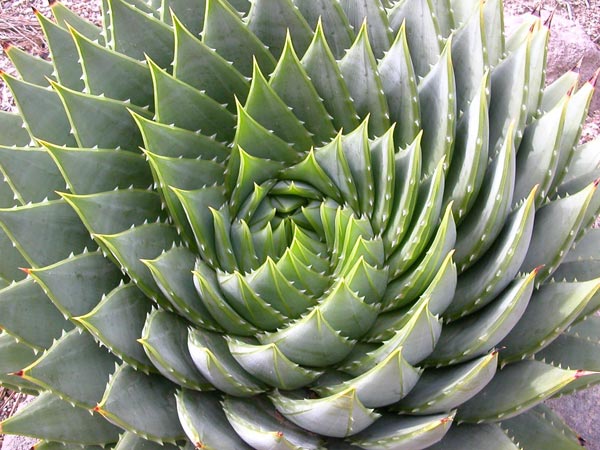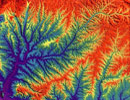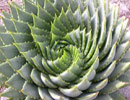Spirals
The logarithmic or equiangular spiral is one of the most beautiful forms in nature, and it occurs in a wide variety of systems and at an enormous range of scales.
No matter what the size, the shape of a given remains the same. Different spirals may twist at different rates however, and the twistedness is governed by the parameter τ in the following equation that defines the spiral in polar coordinates:
r = eτΘ, where r is the radius and Θ is the angle.
Computer animated spiraling vortex. Applet courtesy of Jared Tarbell. Spirals in Nature
Galaxies are the largest examples of spirals known. A single spiral galaxy may contain a trillion stars. Interestingly, there is a relatively uniform
distribution of stars in a spiral galaxy. In other words, the spiral arms do not contain a greater number of stars.
Rather, the spiral arms are brighter because they contain many short-lived extremely bright stars, formed by a rotating spiral wave of star formation. The waves of
star formation are made visible because they contain many young and very bright stars that only live a short time, perhaps 10 million years, as compared to the more common stars,
such as our sun which live for several billion years. We will revisit spirals in nature in Chapter 11, when we explore the Fibonacci Sequence, a common and beautiful numeric pattern in nature which creates the Golden Ratio.
Remember: Fractals transcend scale. Fractals occur over a wide range of sizes in nature, from the microscopic to the galactic - AND at all time scales, from nanoseconds to millions of years. |
||||||
|
<- PREVIOUS NEXT -> © Fractal Foundation. |










